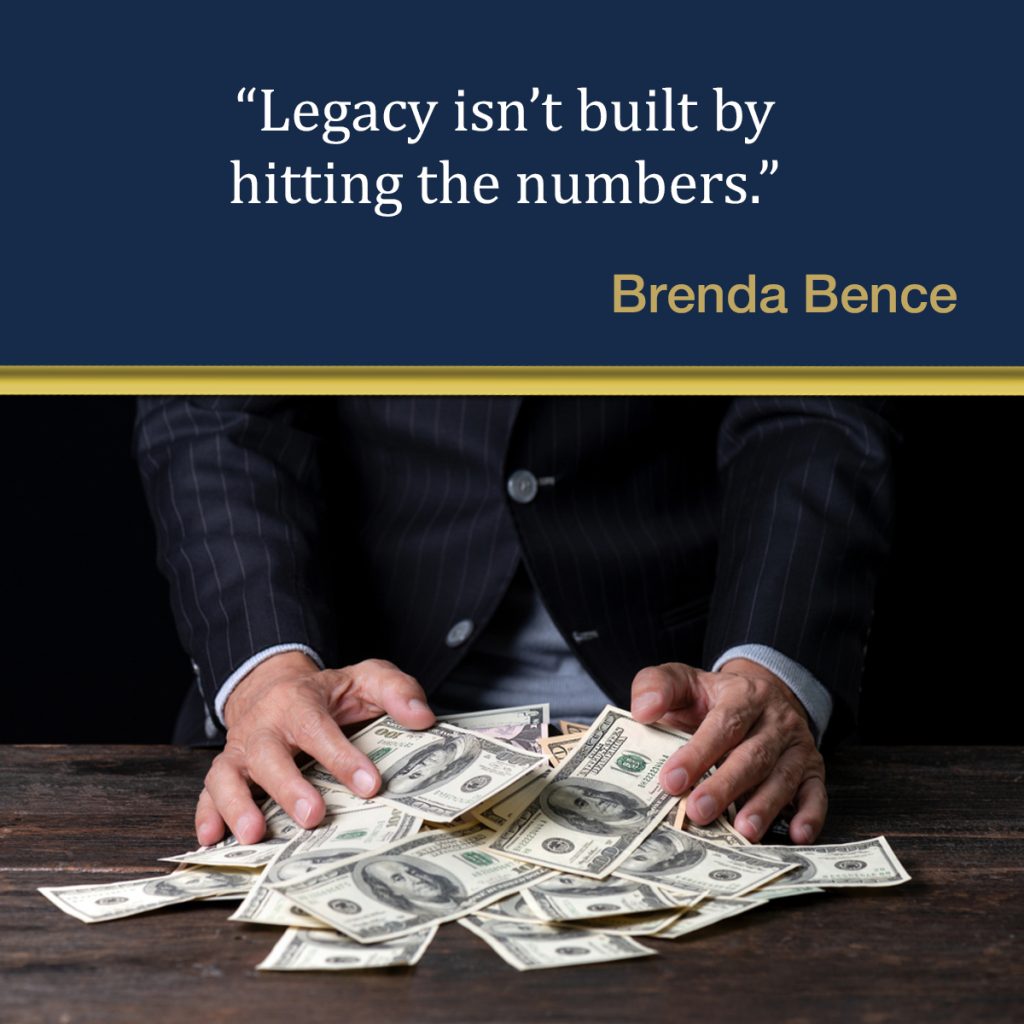
What causes certain leaders to achieve legacy status but not others, no matter how much a leader has accomplished nor how visible he or she has been in a company or in an industry? Just what is it that makes certain leaders so memorable and inspiring – leaving a clear legacy behind – while others are quickly forgotten?
A few months after Xavier was promoted into his new regional CEO role, he came to my office for a coaching session. After he shared a general update on how he was getting along in the job, I asked him to fast-forward in his mind to what success would look like after five years in the post.
He paused, then responded, “I will have left a legacy.”
“That sounds exciting,” I responded. “Tell me more.”
“By then, we will have doubled sales, expanded into five new geographic regions, increased market share by 20%, and added 250 new employees.”
I paused for a moment, then shared: “Xavier, one thing I’ve learned from coaching so many great leaders over the years… Legacy isn’t built by hitting the numbers.”
What does it take to create a legacy?

It’s not unusual for leaders to want to leave an inspiring legacy when they step down from a post. Leaders want to make an impact – to leave their time in office with something noticeable and memorable to show for it.
Yet, just like Xavier, too often leaders fall into a trap of “needing to hit the numbers” and using that, and only that, as the key benchmark for success. As a result, they place all of their short-term attention on the profit and loss statement, moving from quarter to quarter to quarter, achieving incremental growth, satisfying their bosses, their Board, shareholders, and Wall Street. But in the meantime, they haven’t stepped back enough to realize that those achievements are temporary and, by primarily focusing on numbers, leaders won’t have made an impact on the hearts and minds of their team members.
Don’t get me wrong: Of course, you must “hit the numbers!” It’s very clear that, if you’re not meeting stakeholder expectations from a top-line and bottom-line business standpoint, it’s likely your time in position won’t be long.

But true legacy as a leader doesn’t come from statistics and achieving tangible measurable benchmarks. Achieving numbers is the price of entry for leaders, the basic requirement of your job.
What is often overlooked – and that which will truly create a legacy for a leader – is the “how” of leadership.
Ok… so, how do YOU™ start building a legacy?

What about YOU™? If someone in your organization were to stop and ask your team members, your function heads, your direct reports, and peers to state what they felt your legacy was in your post so far, what would they say?
Here are a few questions to consider that will help you get a sense of the kind of legacy you are in the process of building for yourself:
- Are you focused primarily on building people or on building business?
- What kind of culture are you instilling (and culture “is” instilled from the top). What are five words to describe the culture you want under your leadership? Is that how people would describe the culture now?
- What kind of balance are you achieving when it comes to time spent on relationships versus tasks?
- Are you using a “pull” style – engaging and asking powerful questions – or are you using a “push” style – simply telling people what to do?
- Is your overall attitude positive or negative? (Just like in the animal kingdom, leaders of any organization establish the overall tone of the entire company.)
- Is your energy marked by calm confidence or is it rushed and frenetic?
- Within your organization, are you genuinely focused on helping people grow, learn, and develop, or are you judging them?
Your answers to the questions above are the keys to building a legacy.
Let’s put it this way: In years to come, I guarantee no one will ever say, “Do you remember Meredith? She was the Vice President who always hit the numbers!” No, you will be remembered by the impact you made on people and on the organization as a whole, the “feel of the place” while it is under your guidance. If you’re not paying attention to that, you will become “just another leader” who did his/her job.
I’m reminded of this quote by Maya Angelou, which I like to share with leaders I coach:
“People will forget what you said, people will forget what you did,
but people will never forget how you made them feel.”
Create a legacy for yourself by not only hitting the numbers but by being a leader people “want” to work for. Of course, you should achieve success in building the business, but it can be done through engaging people and inspiring them. That’s how you create followership, leave a lasting legacy, and in the process, build an inspiring leadership brand for yourself.
If you’d like to learn more about how to be a leader others want to work for, you might benefit from reading my book Would YOU Want to Work for YOU?
(Also available in e-book and audio book formats.)


0 Comments